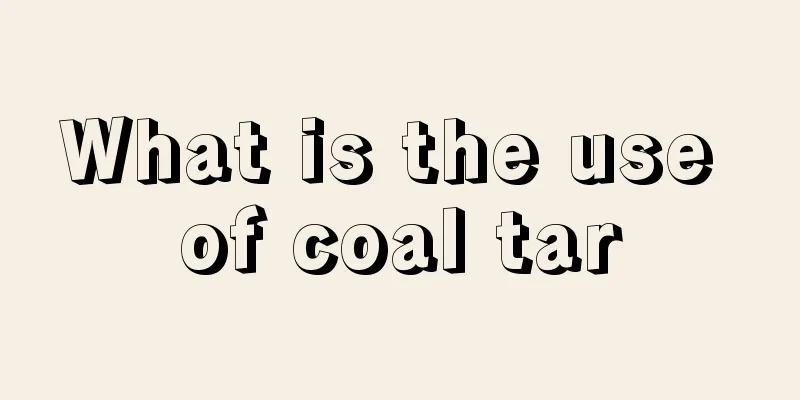What is the use of coal tar

|
The composition of coal tar is actually quite complex. Although it has many uses, it is carcinogenic. In daily life, it is mainly used to make phthalic anhydride, which provides materials for the production of engineering plastics or dyes. However, if it acts on the skin, it can easily cause dermatitis, acne, folliculitis, phototoxic dermatitis and other hazards. 1. Basic Introduction Coal tar is a black or brown viscous liquid, also known as coal tar. The odor is similar to naphthalene or aromatic hydrocarbons. It is a by-product of coal distillation to produce coke and coal gas. The composition is complex, mainly a mixture of phenols, aromatic hydrocarbons and heterocyclic compounds. It is carcinogenic and belongs to IARC Group I carcinogen. It is mainly used to fractionate various phenols, aromatic hydrocarbons, alkanes, etc., and can be used to manufacture other dyes or drugs, etc. Currently, the industries involving coal tar also include direct combustion as fuel. 2. Basic Uses (1) Naphthalene is used to produce phthalic anhydride, which is used to produce resins, engineering plastics, and dyes. Used in paint and medicine, etc. (2) Phenol and its homologues are used to produce synthetic fibers, engineering plastics, pesticides, medicines, fuel intermediates, explosives, etc. (3) Anthraquinone fuels, synthetic kneading agents and paints. (4) Phenanthrene is an isomer of anthracene. Its content is second only to naphthalene. It has many uses. However, due to its large output, it still needs to be further developed and utilized. (5) Carbazole is an important raw material for dyes, plastics and pesticides. (6) Asphalt is the residual liquid from tar distillation and is a mixture of various polycyclic polymer compounds. Used in making roof coatings, moisture-proof layers and road construction, producing asphalt coke and electric furnace electrodes, etc. 3. Related Hazards It acts on the skin and causes dermatitis, acne, folliculitis, phototoxic dermatitis, toxic melanosis, warts and cancer. Can cause damage to the nasal septum. Environmental hazards: Harmful to the environment and can cause air pollution. Explosion hazard: This product is flammable and a carcinogen. Dangerous characteristics: Its vapor can form an explosive mixture with air and is very likely to burn and explode when exposed to open flames or high heat. Reacts violently on contact with oxidants. If exposed to high heat, the pressure inside the container will increase, causing the container to crack and explode. |
<<: What is the use of pine pollen
>>: What are the self-correction training methods for strabismus
Recommend
What is the reason for cracked soles
Cracks on the soles of the feet are usually cause...
What to do if squamous cell carcinoma metastasizes to the stomach in the elderly
The patient, male, 59 years old, was diagnosed wi...
Is prostate cancer more common in middle-aged people? How to treat male diseases with a normal mind
Nowadays, many people suffer from diseases. With ...
How to prevent liver cancer in life? Pay attention to these 6 types of people who are prone to liver cancer
Liver cancer is a malignant tumor of the liver, w...
What are the symptoms of advanced pancreatic cancer
Late-stage pancreatic cancer usually refers to pa...
What to do if there is white sticky secretion on the lips in the morning
If you find white mucus secretion on your lips wh...
Toothpaste is not just for brushing your teeth—32 unusual uses!
Is a small piece of toothpaste only used for brus...
How to best care for liver cancer patients in life? Six key points to grasp in liver cancer care
Many busy people in life suffer from liver cancer...
What are the common symptoms of liver cancer? Two basic knowledge points about liver cancer
What are the symptoms of liver cancer? Some peopl...
What should newborns cover when sleeping in summer
In summer, the weather is quite hot, which is why...
What are the symptoms of gastric cancer in the middle and late stages? There are three symptoms
In the middle and late stages of gastric cancer, ...
What are the symptoms of jaundice caused by pancreatic cancer
What are the symptoms of pancreatic cancer jaundi...
What fruit can prevent colon cancer
You should try to eat more vegetables, fruits, an...
Can I remove the scabs from my tattoo?
Usually scabs will form after a tattoo. Sometimes...
How to get back together after breaking up for several months
Love is often the result of dopamine secretion in...









